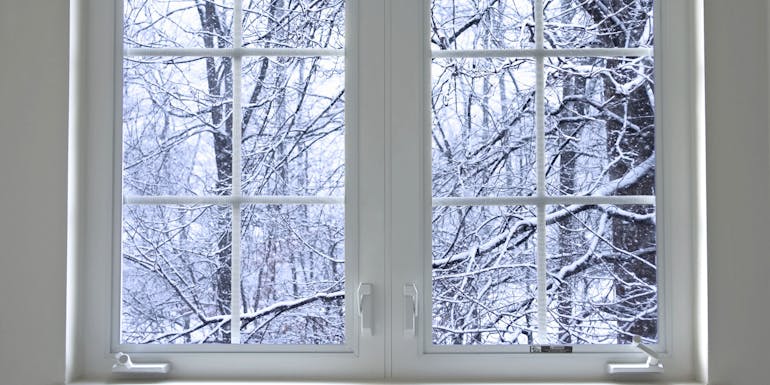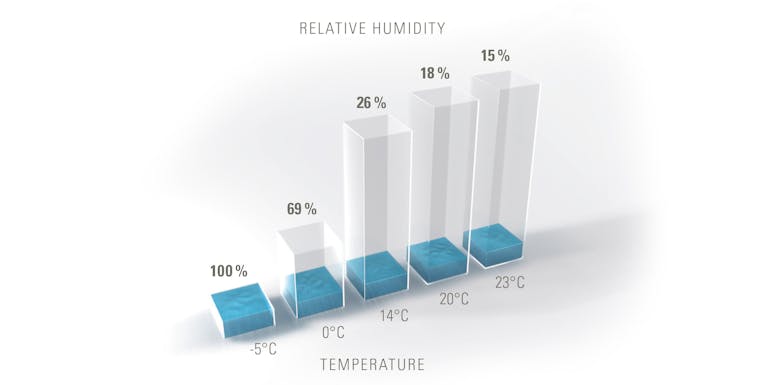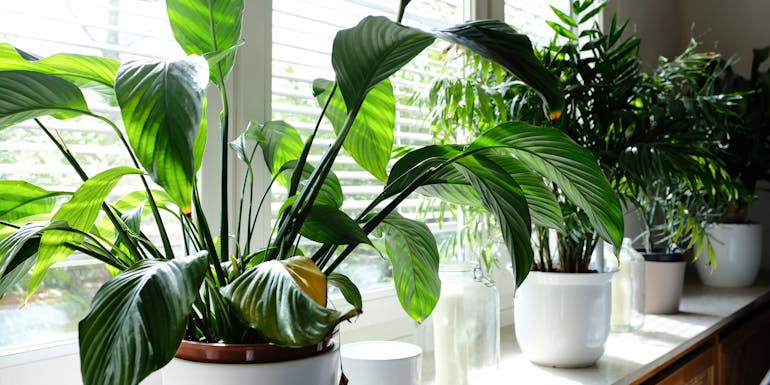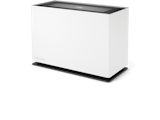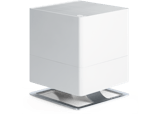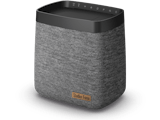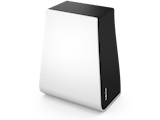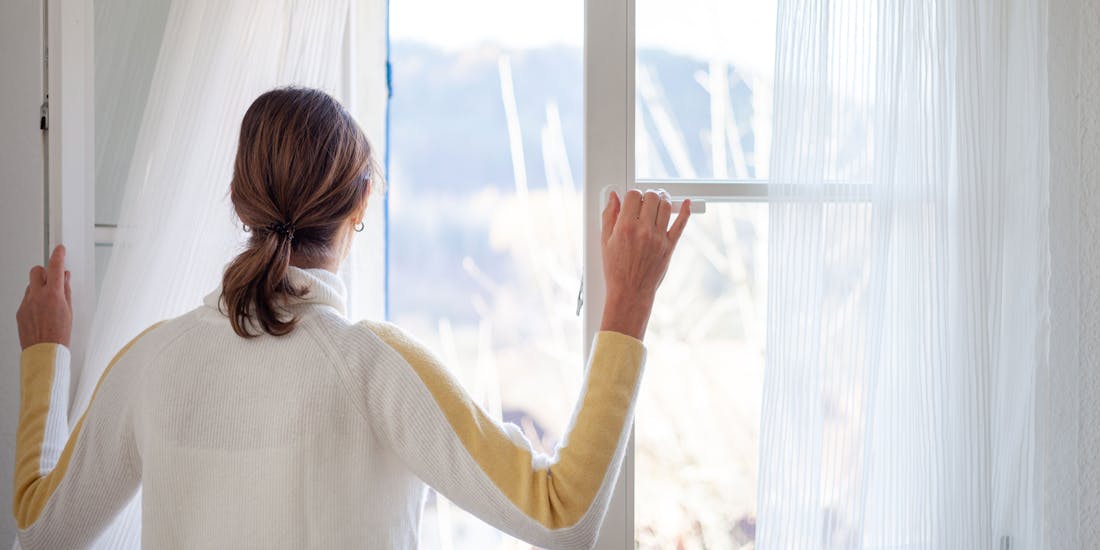
Nadine Walder, 13 November 2025
Humidify the air
No more dry indoor air in the winter
Winter brings with it not only cold but also dry air indoors. Excessively dry air indoors not only feels unpleasant but can also be harmful to health as it makes us more susceptible to bacteria and viruses. The optimal relative humidity level at home and at work is 40% to 60%. In winter, the level is very often below these ideal values. But how can you combat dry air in the winter? Read this article to find out why the air indoors is often excessively dry in winter, the myths purveyed on this subject and what you can actually do to combat dry air.
Read on to find out
- Why is the air indoors dry in the winter
- The risks associated with dry indoor air
- No more myths about tips and tricks for combatting dry indoor air
Why is the air indoors dry in the winter?
The problem of excessively dry indoor air is a frequent occurrence during the cold months of the year. Cold air that flows in from outside contains very little water vapour. At low temperatures, the air is unable to absorb sufficient moisture: a problem that is connected with the so-called vapour pressure. Water molecules in the air are held together by this pressure. The maximum possible vapour pressure is lower in cold air than it is in warm air. That is why more water molecules can be absorbed when the air is warm.
The problem of excessively dry air in winter is exacerbated when you have the central heating on. When the cold and already dry outdoor air is heated up indoors, the indoor air becomes even drier. That may sound contradictory at first. The incoming cold air is heated up artificially by the central heating system which reduces the level of relative humidity of the indoor air. Relative humidity describes the quantity of water vapour that is in the air at a certain temperature in relation to the maximum possible quantity.
At a temperature of 0 °C, the air from outside can only absorb 4 grams of water per cubic metre of air. At a room temperature of 20 °C, the absorption capacity is 20 grams per cubic metre of air. For example: even if the relative humidity outside is 69% at 0 °C, this corresponds to just 18% indoors at 20 °C. The graph below shows what happens to the cold air and its level of humidity when it is heated up.
The risks associated with dry indoor air
If the air indoors remains excessively dry (relative humidity below 40%) for a long period of time, it can have noticeably unpleasant consequences. Dry air in itself won’t make you ill but it does cause the mucous membranes in your nose and bronchial tubes to dry out. As a result, they become sensitive and more susceptible to bacteria and viruses. The problem is exacerbated because flu viruses can survive longer and multiply better in dry air. The reason for this is the fact that there are insufficient water molecules in the air to bind the viruses and transport them down to the ground.
Excessively dry indoor air can also make your skin, throat and eyes dry. It can cause skin tightening, a sore throat, itchy and cracked skin and burning, red eyes. Other symptoms of excessively dry air in winter include headaches, restless sleep and reduced ability to concentrate.
The elderly, children, people with sensitive mucous membranes and allergy sufferers in particular frequently suffer from the effects of excessively dry indoor air in winter. Fortunately, there is a way to combat indoor air that is too dry efficiently and effectively. Unfortunately however, there are also countless tips and tricks on the Internet which only increase humidity for a short period of time and not effectively and which are sometimes a problem as far as hygiene is concerned.
No more myths about tips and tricks for combatting dry indoor air
Houseplants increase humidity
A very common tip for combatting dry air is to use houseplants. The claim that plants increase humidity is only partially true as they only help to do so in certain cases – water evaporates from plant pots and the leaves release moisture. However, that moisture is not sufficient to create and maintain an ideal level of humidity. Not all plants release the same amount of water either. There are even plants – such as Boston ferns, cacti and palms – which release no water at all and instead take moisture from the air. You can find a concrete example of how little moisture plants actually release in our “Jungle fever article” in the section “Plants as humidifiers”.
Indoor fountains, fish tanks and bowls of water on radiators increase the level of humidity
Another tip that you may keep reading or hearing about is that indoor fountains or fish tanks are a good way of combatting excessively dry indoor air. This is also a myth: very little water evaporates from indoor fountains and fish tanks and therefore they do not produce a sustainable increase in the level of humidity. For example, on average only 3.5 litres of water per week (a humidifier like Oskar can achieve that in an hour) will evaporate from a fish tank that holds 54 litres. The effect is similar when you place a bowl of water on a radiator: again, the amount of water that evaporates is too small to humidify the room sustainably.
An additional problem with using these methods to increase humidity lies in the lack of hygiene. Indoor fountains and also bowls of water on radiators provide an ideal breeding ground for germs, bacteria and viruses. And also a fish tank takes a lot of looking after and needs to be maintained properly for it to be hygienic. You will have to invest a lot of time in hygiene for a method that will only humidify your air inefficiently.
Tips that actually work
To create an ideal, healthy indoor climate with optimal humidity in winter, you will have to use methods that are more effective and efficient.
Don’t turn up the heating too high
To create an ideal indoor climate, you need to pay attention to the room temperature: if the temperature is too high, it is counter-productive. Because of the relationship described above between the cold air and its level of humidity when it is heated up artificially, the air will become increasingly dry as the room temperature increases. In our article “Keep warm at home in spite of the energy crisis”, we explain how you can turn your central heating down a few degrees without freezing.
Carrying out ventilation correctly is essential
When it comes to preventing excessive dryness, the subject of ventilation also plays a decisive role. Carrying out ventilation correctly has a decisive influence on the indoor climate, especially in winter: intensive ventilation a couple of times a day is better than tilting all your windows open. Be sure to read our article on the subject of ventilation in winter. The Stadler Form customer team explains the precise relationship between ventilation, humidity and humidifiers during the cold months of the year.
When it comes to ensuring that the indoor air doesn’t become too dry in the winter, the use of a humidifier – ideally with hygrostats – is absolutely essential. A humidifier will ensure that the humidity constantly remains within the ideal range. Depending on the device, it can release between 25 and 100+ litres of water in a week into a room. If the humidifier has an integrated hygrostat, it will switch on automatically as soon as the humidity drops below the chosen setpoint and off when the target value is reached, thus ensuring energy-efficient humidification and a stable relative humidity value.
An air washer is a combination of humidifier and air purifier that is recommended for anyone who attaches importance to clean air. If the indoor air is dry and polluted, it creates an ideal indoor climate by humidifying and purifying the air at the same time. Regardless of whether you opt for a humidifier or an air washer, you should be aware that these devices also require regular care to ensure good hygiene – like all products that use water.
There are a whole load of myths purveyed on the Internet on how to combat dry indoor air in winter. These tips can provide a short-term solution but for a constant feel-good climate without any effort on your part, you should definitely use a humidifier or air washer. Together with the correct room temperature and correct ventilation, you can ensure an ideal, healthy indoor climate for you and your loved ones during the cold months of the year.
Would you like to find out more about how a humidifier can help you feel better or what different humidifier systems are available? You can find more information on our information page about humidifying the air.
More about humidifying the air
If you have questions related to indoor room climate, please get in touch with us. Or subscribe to our newsletter to regularly get informed about current topics regarding indoor climate, experience reports or Stadler Form insights.
